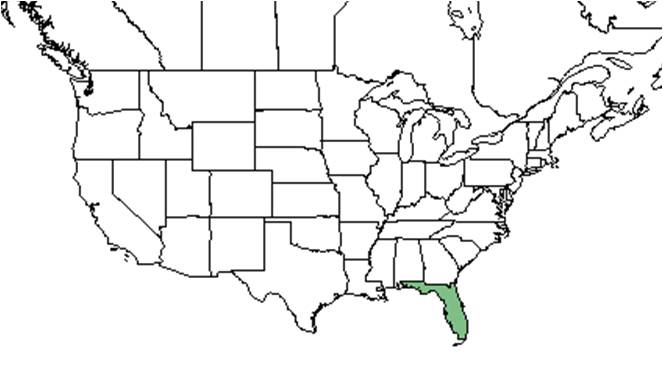Difference between revisions of "Clitoria fragrans"
KatieMccoy (talk | contribs) |
KatieMccoy (talk | contribs) |
||
| Line 34: | Line 34: | ||
===Phenology=== <!--Timing off flowering, fruiting, seed dispersal, and environmental triggers. Cite PanFlora website if appropriate: http://www.gilnelson.com/PanFlora/ --> | ===Phenology=== <!--Timing off flowering, fruiting, seed dispersal, and environmental triggers. Cite PanFlora website if appropriate: http://www.gilnelson.com/PanFlora/ --> | ||
| − | + | ''C. fragrans'' has both chasmogamous and cleistogamous flowers <ref name="FWS"/> and has been observed to produce more cleistogamous flowers and fruit than chamogamous structures (Lewis 2007). The chasmogamous flowers are lavender, with darker purplish lines and white throats<ref name="Native">[[http://hawthornhillwildflowers.blogspot.com/2015/06/fragrant-pigeonwings-clitoria-fragrans.html Native Florida Wildflowers]]Accessed: December 7, 2015</ref> and can be observed blooming May to June<ref name="FWS"/>(FSU Herbarium). Cleistogamous flowers occur later in the summer through late September <ref name="FWS"/>. | |
| − | |||
| − | ''C. fragrans'' has both chasmogamous and cleistogamous flowers <ref name="FWS"/> and has been observed to produce more cleistogamous flowers and fruit than chamogamous structures (Lewis 2007). The chasmogamous flowers are lavender, with darker purplish lines and white throats<ref name="Native">[[http://hawthornhillwildflowers.blogspot.com/2015/06/fragrant-pigeonwings-clitoria-fragrans.html Native Florida Wildflowers]]Accessed: December 7, 2015</ref> and can be observed blooming May to June<ref name="FWS"/>. Cleistogamous flowers occur later in the summer through late September <ref name="FWS"/>. | ||
===Seed dispersal=== | ===Seed dispersal=== | ||
Revision as of 19:10, 8 December 2015
| Clitoria fragrans | |
|---|---|
Error creating thumbnail: Unable to save thumbnail to destination
| |
| Scientific classification | |
| Kingdom: | Plantae |
| Division: | Magnoliophyta - Flowering plants |
| Class: | Magnoliopsida - Dicotyledons |
| Order: | Fabales |
| Family: | Fabaceae ⁄ Leguminosae |
| Genus: | Clitoria |
| Species: | C. fragrans |
| Binomial name | |
| Clitoria fragrans Small | |

| |
| Natural range of Clitoria fragrans from USDA NRCS Plants Database. | |
Common name: sweetscented pigeonwings
Contents
Taxonomic notes
The common name, pigeon wings, is due to the flowers' bird-like appearance [1].
Description
C. fragrans is a perennial, erect, suffrutescent herb that is found in scrub and sandhill habitats along the Lake Wales Ridge (Lewis 2007; Small 1926). It is distinguishable from other legumes by its non-twining habit, prominent stipules, three foliate leaves, and resupinate flowers (Frantz 1977; Lewis 2007). It has both chasmogamous and cleistogamous fowers [1].
Distribution
It is endemic to the Lake Wales Ridge and is an endangered species in Florida [2]. The distribution of C. fragrans is limited by the rapidly disappearing scrub habitat due to agriculture and residential development[1].
Ecology
Habitat
C. fragrans can be found in the xeric soils of turkey oak scrubs and sandhills along the Lake Wales Ridge (FSU Herbarium; Menges et al. 2007; Small 1926). It often can be found occupying open, sandy spaces between shrubs, along sandy fire lanes, and between citrus groves (Cary and Bashore 2007; FSU Herbarium). Associated species include Quercus, Gordonia, Vitis, Pinus, Aristida stricta, Quercus laevis and Quercus incana[2] (FSU Herbarium).
Phenology
C. fragrans has both chasmogamous and cleistogamous flowers [1] and has been observed to produce more cleistogamous flowers and fruit than chamogamous structures (Lewis 2007). The chasmogamous flowers are lavender, with darker purplish lines and white throats[3] and can be observed blooming May to June[1](FSU Herbarium). Cleistogamous flowers occur later in the summer through late September [1].
Seed dispersal
Seed bank and germination
Fire ecology
Pollination
The following Hymenoptera families and species were observed visiting flowers of Clitoria fragrans at Archbold Biological Station (Deyrup 2015):
Megachilidae: Megachile petulans
Use by animals
Diseases and parasites
Conservation and Management
Cultivation and restoration
Photo Gallery
References and notes
Deyrup, M.A. and N.D. 2015. Database of observations of Hymenoptera visitations to flowers of plants on Archbold Biological Station, Florida, USA.
Florida State University Robert K. Godfrey Herbarium database. URL: http://herbarium.bio.fsu.edu. Last accessed: October 2015. Collectors: R.K. Godfrey, O. Lakela, Grady W. Reinert, John K. Small, Edgar T. Wherry. States and Counties: Florida: Highlands, Polk. Compiled by Tall Timbers Research Station and Land Conservancy.